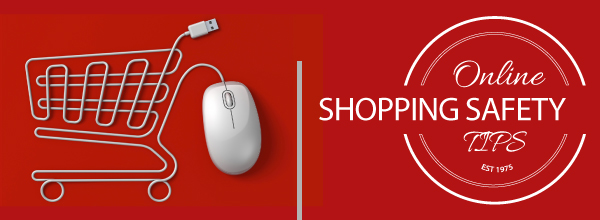
‘Tis the season for online shopping. In fact, over 51 percent of consumers will make at least one online purchase during the holiday season. With an increase in online retail transactions during the holidays, there will also be an increased vulnerability to your identity unless certain precautions are taken to protect it.
For example, Dashlane, a company that specializes in online password protection, performed a study of different retailers to grade their security policies. Surprisingly, their study ranked some of the most common online retailers such as Dick’s Sporting Goods, Toys ‘R Us, and J Crew in the bottom 10.
Here are 10 tips for staying safe online, so you can start checking off items on that holiday shopping list.
Also, as a final note, many insurance companies offer identity theft insurance coverage as part of their homeowners policy. To find out more, please contact our office.
Online Shopping Protection Tips
1. Use Familiar Websites
Start at a trusted site rather than shopping with a search engine. Search results can be rigged to lead you astray, especially when you drift past the first few pages of links. If you know the site, chances are it’s less likely to be a rip off.
2. Look for the Lock
Never ever, ever buy anything online using your credit card from a site that doesn’t have SSL (secure sockets layer) encryption installed—at the very least. You’ll know if the site has SSL because the URL for the site will start with HTTPS:// (instead of just HTTP://). An icon of a locked padlock will appear, typically in the status bar at the bottom of your web browser, or right next to the URL in the address bar.
3. Don’t Tell All
No online shopping store needs your social security number or your birthday to do business. However, if crooks get them, combined with your credit card number for purchases, they can do a lot of damage.
4. Check Statements
Don’t wait for your bill to come at the end of the month. Go online regularly during the holiday season and look at electronic statements for your credit card, debit card, and checking accounts. Make sure you don’t see any fraudulent charges, even originating from sites like PayPal.
If you do see something wrong, pick up the phone to address the matter quickly. In the case of credit cards, pay the bill only once you know all your charges are accurate. You have 30 days to notify the bank or card issuer of problems, however; after that, you might be liable for the charges anyway.
5. Inoculate Your PC
Swindlers don’t just sit around waiting for you to give them data; sometimes they give you a little something extra to help things along. You need to protect against malware with regular updates to your anti-virus program.
6. Use Strong Passwords
Utilizing an uncrackable password is never more important than when banking and shopping online.
7. Think Mobile
The National Retail Federation says that 5.7 percent of adults will use their mobile devices to do comparison shopping before making a purchase. There’s no real need to be any more nervous about shopping on a mobile device than online. The trick is to use apps provided directly by the retailers, like Amazon, Target, etc. Use the apps to find what you want and then make the purchase directly, without going to the store or the website.
8. Avoid Public Terminals
If you use a public computer to make purchases (which we hope you never do), just remember to log out every time you use a public terminal, even if you were just checking email.
9. Privatize Your Wi-Fi
If you do decide to go out with the laptop to shop, you’ll need a Wi-Fi connection. Only use the wireless if you access the Web over a virtual private network (VPN) connection.
10. Count the Cards
Gift cards are the most requested holiday gift every year, and this year will be no exception. Stick to the source when you buy one; scammers like to auction off gift cards on sites like eBay with little or no funds on them.
